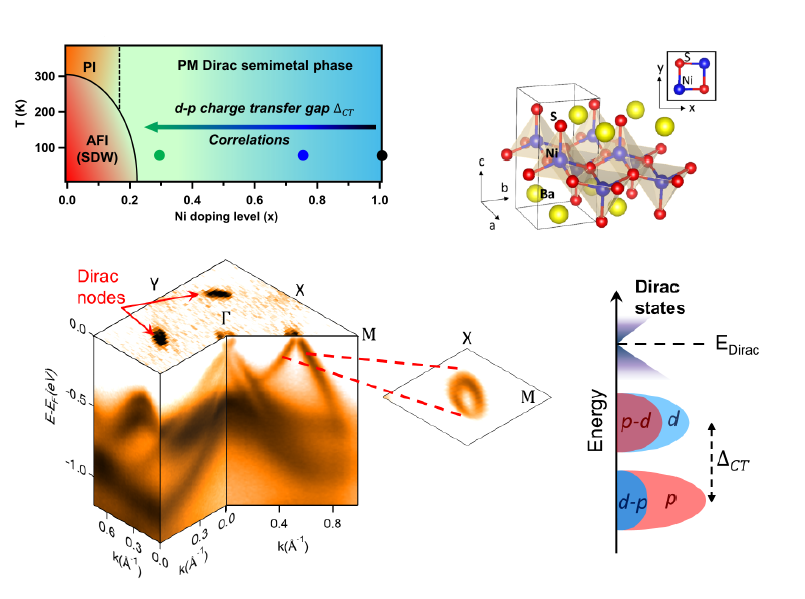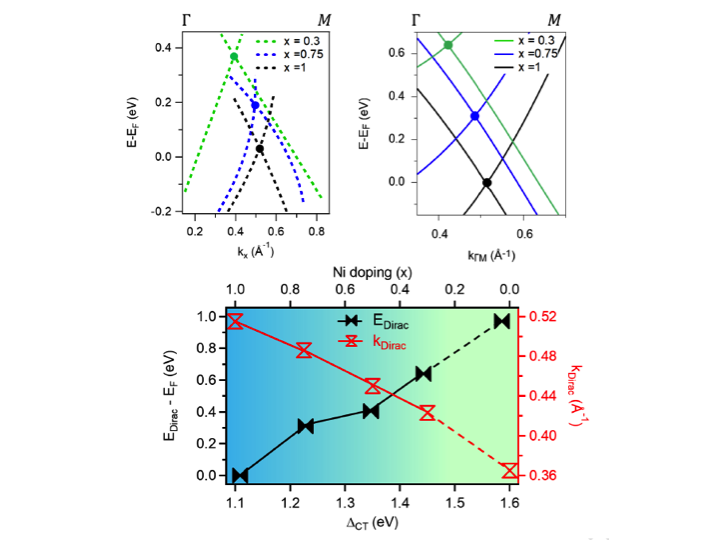Dirac fermions play a central role in the physics of topological materials. We have shown for the first time that the properties of Dirac cones can be varied in reciprocal space by chemical substitution. By acting on the Co/Ni substitution in the correlated system BaCo1-xNixS2, we have succeeded in manipulating the position and shape of its Dirac lines. Remarkably, the same Co/Ni substitution can be also used to control the metal-insulator transition across the phase diagram of this material.

Fig.1 Phase diagram and electronic structure of BaCoNiS2
The on-demand control of topological properties with macroscopic parameters is the key to realize a novel generation of electronic devices. We have shown that the tunability of Dirac states can been realized by varying the electron correlation strength and the charge-transfer gap in a class of late-transition metal compounds. Our findings indicate a new pathway for engineering highly tunable Dirac materials.

REFERENCE
Niloufar Nilforoushan, Michele Casula, Adriano Amaricci, Marco Caputo, Jonathan Caillaux, Lama Khalil, Evangelos Papalazarou, Pascal Simon, Luca Perfetti, Ivana Vobornik, Pranab Kumar Das, Jun Fuji, Alexei Barinov, David Santos-Cottin, Yannick Klein, Michele Fabrizio, Andrea Gauzzi, and Marino Marsi, « Moving Dirac nodes by chemical substitution », Proc. Natl. Acad. Sci. U.S.A. 118, e2108617118 (2021)